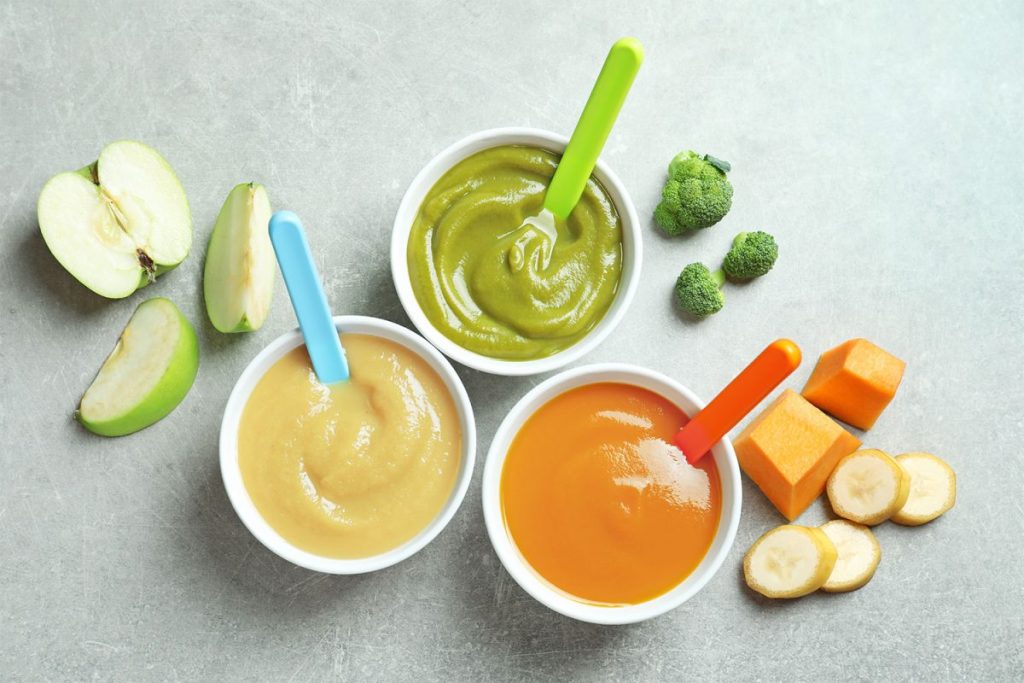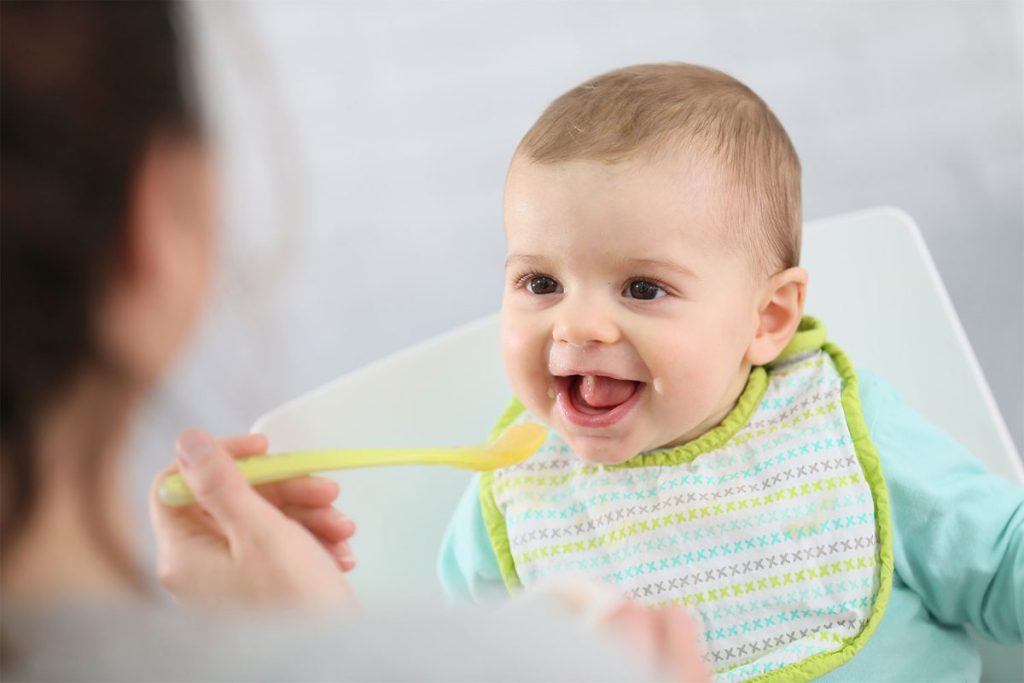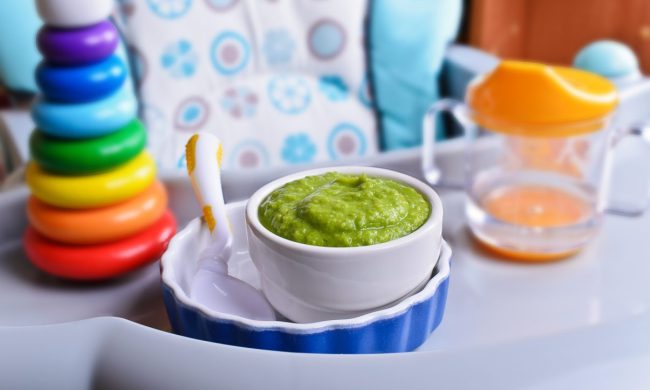Are you tired of paying high prices for mediocre, prepackaged baby food? Do you think you can make better food yourself? Are you seeking for ways to incorporate vegetables into baby’s diet? Homemade baby food may be just the alternative that you’re looking for. This option allows you to customize baby’s nutrition to precisely your liking. Get started with baby food making today, with just the following tools and tips!
Something to feed baby
First and foremost, to prepare your own baby food, you need raw ingredients! Be they produce or meat, opt for fresh food when it’s possible. Pick nutrient-dense items such as leafy green vegetables and lean meats. You may also choose to feed your baby organic fruits and vegetables for a more natural diet. It is recommended that you leave skins and pits intact until after cooking to retain maximum nutrition, so the only measures that need to be taken prior to cooking are to wash and slice up your baby food ingredients!

Something to cook with
To make baby food for babies under 8 months old, you must first cook most things you feed them. The exceptions to this rule include foods that are already soft, like bananas and avocados. Cooked foods are softer than raw ones, which makes them less of a choking hazard. Also, many fruits and vegetables contain cellulose, which is hard to digest and can cause diarrhea. Avoid this unpleasant situation by cooking your baby’s foods before mashing and mixing them! Cook foods until they are tender and soft. Whether you choose to boil vegetables in the minimum amount of water required in a pot or purchase a steamer just for making baby food, there are a variety of options when it comes to ways to cook foods. You can also bake or roast foods to lock in nutrients, as water dilutes them. In the case of cooking meats, be sure to save the resulting liquid to mix into the final baby food concoction. Therefore, for cooking foods, you can pick between utilizing your existing oven, stove, microwave, or slow cooker, or purchasing a new gadget designed specifically with baby food making in mind. Avoid using devices that fry or grill foods as these methods of cooking can introduce carcinogens and toxic compounds that babies should not be exposed to. However, remember that you can add spices and seasonings to your baby’s food — they have adventurous palates!
Something to puree with

Once your baby’s food is nicely cooked and soft, it can be blended or mashed to a consistency appropriate for an infant to eat. Similar to cooking, pureeing foods can be done in a number of different ways. Be sure to add any liquids that remained after cooking foods to the solids before mixing. A traditional blender or food processor can be used, if you keep in mind that the former is more appropriate for liquid ingredients, though you might find the amount of cleanup to be cumbersome as compared with the amount of food you’re working with. An immersion blender is another option for mixing foods that allows you to carefully customize foods’ textures. Grinders or food mills provide a method for quick, tableside baby food preparation. Forks and potato mashers are simple, mechanical tools that can be used to break down foods to nearly any desired consistency. Some versatile baby food makers can cook and puree foods — and others do even more than that.
Something to store prepared food in
After cooking and mixing foods, unless they are being eaten right away, they must be stored appropriately. Baby food should be kept in airtight containers in the fridge or freezer. Fruits and vegetables stay good for about six months in the freezer, and meats for up to two months. You can choose to utilize small plastic food containers that you already have, or purchase partitioned baby food storage containers. If you opt to use containers that you had before the baby came along, make note that the amount of space taken up by these containers quickly adds up. Also, they can only each hold one batch of food. There are many shapes and sizes of silicone baby food storage containers available on the market. These containers are separated into sections that usually each hold about one serving of food, and allow for frozen contents to be easily popped out. Ice cube trays are a budget alternative to proper baby food storage trays. When retrieving foods from storage, be sure to only take out as much as your baby will eat at one meal — leftover food will be mixed with saliva and should be discarded, not restored or reheated again.
Something to reheat with
Though food should not be given to a baby hot, frozen homemade baby food should be warmed prior to serving. A good rule of thumb is to serve foods at a temperature no warmer than body temperature. Frozen foods can simply be defrosted in the refrigerator, or they can be made slightly warmer with the help of a stove, microwave, or lukewarm water bath. Again, some functional baby food makers can also reheat foods to an appropriate temperature. If reheating over the stove, make sure the heat setting is left on low to prevent overheating. Food reheated in a microwave should be stirred thoroughly and left to sit for a few minutes to avoid hot spots. Do not refreeze partially eaten foods to avoid bacterial contamination.

Something to clean up with
After the process of making baby food is over, you might be left with quite a few dishes. Pay close attention to how each gadget is to be washed. Some pans and parts of baby food makers are dishwasher safe, but others are not. You may want to use a delicate soap or detergent for kitchen tools that your baby comes into contact with. Also be sure to have specially shaped cleaning utensils, like a bottle brush, at hand if necessary.
Making your own baby food at home is a surefire method to move away from the mundane and often repetitive flavors of baby food found in store bought offerings. You can also save a bit of cash, as well as trips to the store, by feeding your baby homemade baby food. Consider cooking and mixing your own baby food in order to optimize the creativity and nutrition of dishes being fed to your infant.


